Description
In industrial automation, where control systems must endure extreme temperatures, corrosive atmospheres, or seismic stresses without faltering on network connectivity, engineers often contend with standard modules that buckle under harsh conditions—leading to intermittent dropouts, degraded I/O signals, or full network failures that cascade into process halts. The Allen-Bradley 1756-EN2TXT counters this as a rugged EtherNet/IP communication module from the ControlLogix-XT series, delivering robust bridging and switching for up to 256 Logix and 128 TCP/IP connections in demanding process control setups. Envision an offshore oil platform where PLCs coordinate pumps and valves amid salt spray and 70°C heat—if Ethernet links degrade, you’d face delayed diagnostics, unsafe interlocks, or production stalls costing millions in deferred output. This module is indispensable in such high-reliability environments, providing embedded switching and real-time messaging to maintain system stability, even when ambient extremes test conventional hardware limits.
The Allen-Bradley 1756-EN2TXT is tailored for facilities where environmental resilience trumps standard performance, supporting integrated motion for up to 8 axes while enabling plant-wide data exchange via CIP protocols. It’s a go-to for modular integration in sectors like mining or marine propulsion, where its conformal coating and wide thermal range prevent condensation-induced shorts or thermal throttling that plague off-the-shelf adapters. By incorporating SNMP for managed oversight and socket services for custom apps, it streamlines troubleshooting, reducing the need for redundant cabling or protocol converters. In vibration-heavy or EMI-saturated zones, its twisted-pair copper media ensures signal integrity over long runs, aligning with goals of enhanced diagnostics and seamless scalability. Keywords such as “industrial automation,” “process control,” “I/O signal,” and “high reliability” highlight its niche—the Allen-Bradley 1756-EN2TXT fortifies network backbones, ensuring deterministic performance in SIL 2/3 loops where connectivity is the linchpin for operational continuity.
- 1756-EN2TXT
The Allen-Bradley 1756-EN2TXT installs into any slot of a ControlLogix-XT chassis, extending the backplane to connect controllers like the 1756-L73 to EtherNet/IP networks via two RJ-45 ports that support daisy-chaining or star topologies without external switches. Positioned as the communication tier in the automation stack, it handles real-time I/O messaging—up to 10,000 packets per second—while routing general messages like produced/consumed tags or HMI queries at 2,000 packets per second, interfacing with remote I/O racks or drives over distances up to 100 meters. This setup enables seamless integration with Studio 5000 for tag-based programming, where it bridges Logix logic to field devices like VFDs or safety relays, supporting CIP Motion for synchronized axes without latency spikes.
In operation, the module’s embedded switch manages traffic with QoS prioritization, buffering packets to isolate faults and maintain sub-5 ms response times, while USB configuration ports allow direct firmware updates via ControlFLASH. For instance, in a steel rolling mill, the Allen-Bradley 1756-EN2TXT might ferry temperature sensor data from remote drops to the PLC, applying time-stamping for event analysis—all while its XT-rated enclosure withstands 5G vibrations per IEC 60068-2-6. Diagnostics include port LEDs for link/activity and SNMP traps for bandwidth alerts, integrable with FactoryTalk for predictive logging, and its support for IGMP snooping optimizes multicast flows in video-integrated networks. This layered resilience cuts wiring complexity and boosts compatibility with hybrid systems, letting engineers emphasize control strategies over link management in the wider process control landscape.
| Specification | Details |
|---|---|
| Model Number | 1756-EN2TXT |
| Brand | Allen-Bradley (Rockwell Automation) |
| Type | EtherNet/IP Bridge w/ Embedded Switch (XT Series) |
| Input Voltage | 5.1 VDC (via chassis backplane) |
| Operating Temp Range | -25 to +70°C |
| Mounting Style | Chassis slot (1756-XT series) |
| Dimensions | 5.7″ x 1.4″ x 5.7″ (145mm x 35mm x 145mm) |
| Weight | 0.42 kg |
| Interface/Bus | Dual RJ-45 (10/100 Mbps EtherNet/IP), USB |
| Compliance | UL 508, CE, ATEX Zone 2, SIL 2/3 (IEC 61508) |
| Supported Protocols | EtherNet/IP, CIP, SNMP, Modbus TCP |
| Typical Power Draw | 1 A at 5.1 VDC (5.1 W) |
Deploying the Allen-Bradley 1756-EN2TXT infuses your network with endurance built for the fringes, where its -25 to +70°C tolerance ensures long-term performance by averting heat-soak failures that idle modules in unconditioned cabinets, letting I/O streams flow steadily for precise valve modulation amid summer peaks or winter chills. In the thick of operations, this means HMIs update without glitches during 100% load transients, cutting operator errors and stabilizing processes like extrusion lines where a dropped packet could warp profiles—ultimately trimming energy waste from retries.
The module’s embedded switching also lightens deployment loads, as its 256 Logix connections scale without extra hardware, easing engineering overhead in sprawling plants and enabling quick additions like remote safety nodes. Maintenance sharpens too: SNMP polls reveal port errors early, allowing swaps in under 10 minutes via hot-plug slots, which dovetails with strategies for sub-hour MTTR in uptime-critical sites. For outfits where harshness is the norm, the Allen-Bradley 1756-EN2TXT recasts connectivity from a fragile thread into a durable conduit, amplifying throughput and safety without inflating footprint or budgets.
In offshore wind farms, the Allen-Bradley 1756-EN2TXT links turbine controllers to onshore SCADA over EtherNet/IP, its XT coating repelling brine mist in gales up to 70°C—high reliability shines for process control, sustaining critical system uptime as nacelle sensors relay blade pitch data without corrosion-induced drops.
Mining draglines harness the Allen-Bradley 1756-EN2TXT for hoist sequencing, bridging dusty, vibration-riddled cabs to central PLCs; its robust ports handle fast data cycles amid silica loads, ensuring process control precision to avert cable snaps in deep-shaft operations.
Marine engine rooms deploy the Allen-Bradley 1756-EN2TXT for fuel management networks, enduring humid, oily confines with ATEX nods—its SIL 3 integration maintains process control integrity, optimizing combustion via real-time I/O under rolling seas.
1756-EN2T – Standard variant for non-extreme temps, ideal for controlled indoor expansions.
1756-EN2TR – Dual-port version for DLR redundancy in standard ControlLogix setups.
1756-ENBT – Gigabit alternative for high-bandwidth applications like video integration.
1756-EN2TP – Point-to-point model for simpler linear topologies without switching.
1756-AENTR – ArmorBlock Ethernet adapter for remote I/O extension with EN2TXT.
1756-CN2R – ControlNet companion for hybrid protocol bridging in XT chassis.
1503-SP1 – Surge protector add-on for EN2TXT ports in lightning-prone sites.
1783-ETAP – Ethernet tap module for daisy-chaining EN2TXT in ring networks.
Before slotting the Allen-Bradley 1756-EN2TXT into your XT chassis, confirm firmware alignment—v6.004 or later via ControlFLASH—to match Studio 5000, and verify backplane voltage at 5.1 VDC with ripple below 200 mV to sidestep packet jitter. Test cable Cat5e integrity with a tester for <10 ns skew, and ensure enclosure IP66 if in washdown zones; for ATEX, ground per Zone 2 specs with resistance under 1 MΩ. Baseline SNMP thresholds post-install to flag >80% utilization early.
Upkeep for the Allen-Bradley 1756-EN2TXT kicks off with bi-monthly LED sweeps for link/activity greens, querying SNMP counters via RSLinx for dropped packets—if over 0.5%, swap cables; in salty airs, inspect RJ-45 seals quarterly for pitting, reseating with dielectric grease. Semiannually, validate bandwidth with iPerf runs under 95 Mbps sustained, and during annual SIL checks, simulate port faults to confirm failover under 50 ms. These IEC 61508-tuned habits keep links lively without derailing duties.

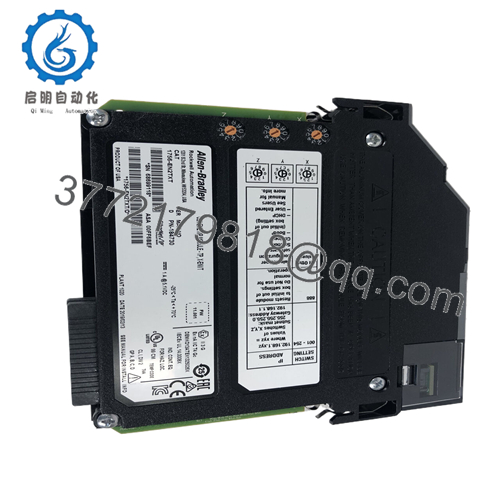
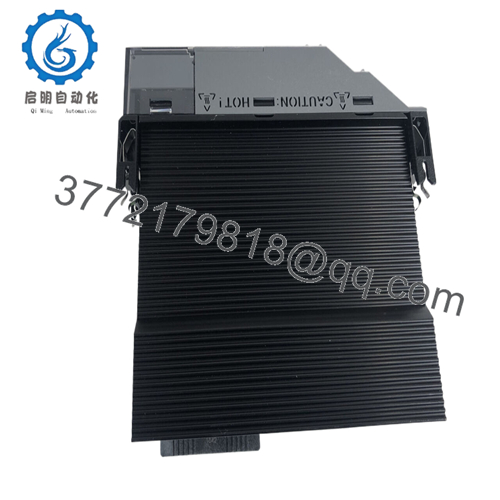
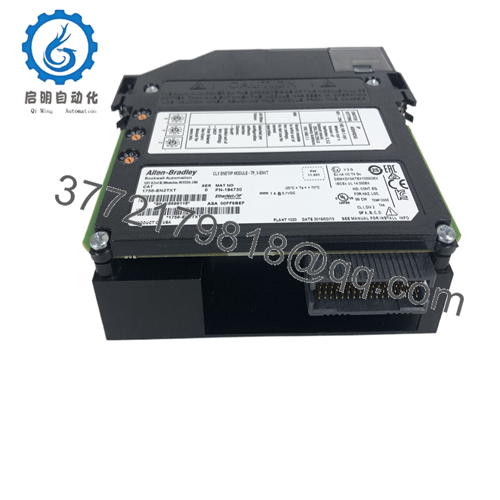
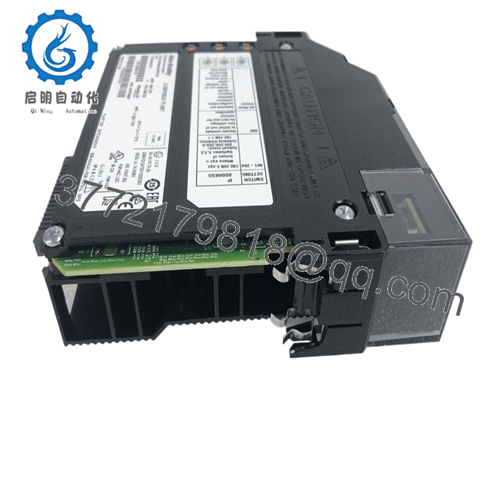
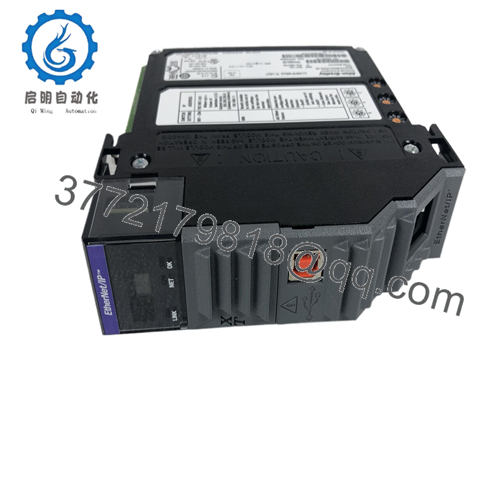
 WhatsApp: +86 16626708626
WhatsApp: +86 16626708626 Email:
Email:  Phone: +86 16626708626
Phone: +86 16626708626


